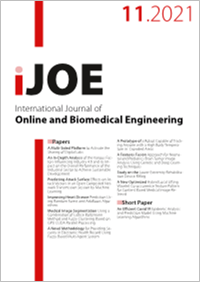Study on the Lower Extremity Rehabilitation Device RHleg
DOI:
https://doi.org/10.3991/ijoe.v17i11.25435Keywords:
rehabilitation, stroke, PID controller, Arduino, hip joint, knee joint, ankle jointAbstract
This paper introduces a device to support lower extremity rehabilitation for stroke patients. First, the device's mechanical structure has been presented; the device has a simple structure and fully meets the exercise function for the patient. The equipment is controlled by control and monitoring software, which is designed from Visual Basic software. The control circuit is the Arduino 2560 circuit, responsible for receiving the angle sensor signal and measuring the current during operation. In addition, the control circuit provides control signals to the actuator and communicates with the software using the rs232 cable. Next, the mathematical model of the device has been established, and we use MatLab software to simulate the response of the device to the PID controller. Simulation results for fast response time and slight overshoot. Finally, an experiment on volunteers was conducted, the results showed that the device was stable and safe to operate. Thus, the RHleg device has been successfully designed and manufactured, tested on volunteers with good results, and this is the basis for us to continue moving towards patient testing.



